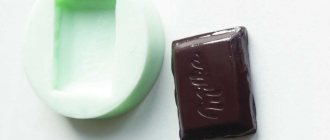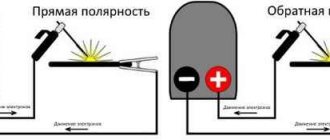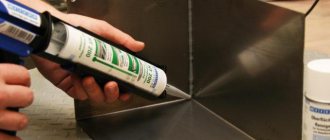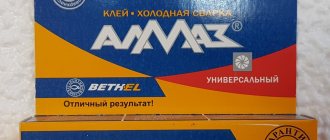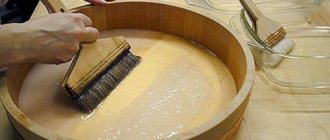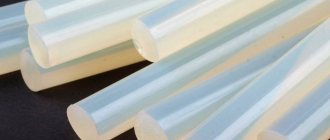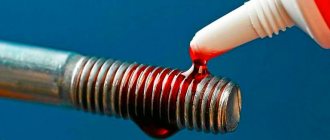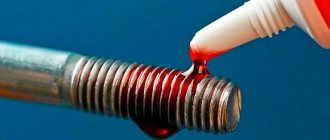Characteristics of silicone
Silicone is a soft, elastic, heat-resistant material obtained from the chemical synthesis of polymers. There are several types of silicone - liquids, elastomers, resins. But, as a rule, this name refers to rubber silicone, which has firmly come into use since the mid-20th century.
This material can be food grade or technical grade. A special feature is complete harmlessness to humans, as well as the following properties:
- ability to withstand high temperatures;
- high elasticity, absence of cracking and crumbling, flexibility;
- resistance to water, UV radiation, oxidation;
- inertness to the influence of microbes, easy disinfection;
- maintaining elasticity during temperature changes.
The use of silicone rubber is justified in medicine - silicone oilcloths, nipples, membranes, syringes and much more are made from it. Silicone is included in sealants that are used for aquariums, gluing surfaces in the bathroom and kitchen. It is used in agriculture, electronics, technology, and many other areas.
Glue selection
Silicone items that are used outdoors require outdoor adhesive. To repair parts in a vehicle, a special automotive composition is used. If it is subsequently necessary to use silicone at high temperatures, then a high-temperature adhesive is needed.
The most popular means of gluing polymers is the composition of the manufacturer Klebfix, which is intended for joining metals, plastics, rubber and other materials in various combinations.
A quality product is the cyanoacrylate composition Permabond. It can be used to glue heterogeneous materials and is suitable for bendable materials. The glue can be used after first applying a primer of the same brand.
How to glue silicone:
- Sealant ELASTOSIL E43 from a German company. The product does not require the use of a substance for adhesion; it is used for joining and sealing glass, plastics, ceramics, wood, silicone rubber, metals and other surfaces. Has self-leveling properties.
- Glue made in Germany REMA-VALMEXIN sc 38 also deserves attention. Products using this composition are not afraid of water. In addition to its adhesive properties, it restores products made from silicone, PVC, rubber and latex.
- The adhesive from the German manufacturer Weiss COSMOFEN CA 12 connects silicone, ceramics, rubber, plastic and other materials. It is resistant to ultraviolet radiation, temperature fluctuations, and dries quickly. The kit includes a convenient dispenser. This option is characterized by high strength. It is recommended to pre-treat the products with Cosmoplast 588 primer for better adhesion.
How to choose glue - rules
Due to the high popularity of the material, there is often a need to glue silicone products. This happens during repairs or during the creation of crafts, jewelry (bracelets, beads), and during creative activities. Typically, silicone or cyanoacrylate glue is used to connect parts; they allow you to reliably seal the defect and join surfaces. The same glue can be used to seal other products; it has excellent adhesion:
- to metal;
- to plastic;
- to rubber.
In order for the result of gluing silicone at home to be excellent, you must choose a composition that meets the following requirements:
- elasticity and strength - the product creates a reliable seam that is not damaged by vibration or mechanical stress;
- optimal density, the ability to penetrate hard-to-reach places and fill small cracks;
- ability to withstand high temperatures - like the material itself, the glue easily tolerates heating up to +300 degrees;
- safety – when heated, the product does not release toxins;
- ease of use – the packaging and method of applying the glue are convenient, accessible even to beginners;
- rapid polymerization - a high-quality product hardens in a couple of hours, the product can be put into operation within a day.
If necessary, the glue must be suitable for plastic, concrete, wood, because it is often necessary to glue silicone with other materials. When purchasing a composition, you need to take into account that glue for silicone can be:
- acidic - cheap, but causes metal corrosion;
- alkaline – includes silicon, is super heat-resistant, usually used as a special agent in extreme conditions;
- neutral - expensive, but of the highest quality, suitable for any surface.
If the product is purchased not only for silicone, but also for plastic products, crafts, repairs, and sealing, it is better to choose a universal composition. For silicone items located outdoors, you need to select adhesive for outdoor use. If there is a need for disinfection, you need to buy material with antiseptic and fungicidal additives. To repair silicone parts in a car, it is recommended to select special auto adhesives. If the product will be used at elevated temperatures, stores sell special high-temperature glue.
Cyanoacrylate adhesives are universal; they can be used to glue products even in the most severe conditions. They are easily applied to the surface directly from the bottle. The compositions are one-component, non-flammable, solvent-free, and therefore safe for health. They are capable of reliably gluing dissimilar materials - for example, silicone and plastic, rubber, metal, the strength of the joint will not be affected. The products dry in a matter of minutes; room temperature is sufficient for this.
How to glue silicone to silicone: choice of glue, popular brands, step-by-step instructions
Silicone is a soft material with a plastic structure, widely used in a number of industrial and household sectors. The question of what can be used to glue silicone to silicone often arises in case of damage to products. To repair an item, you need to choose the right glue and use it correctly.
Description and characteristics of silicone
As a result of the chemical synthesis of polymers, elastic silicone is obtained. There are several types of material - elastomers, liquids, resins. The most common is rubber-like silicone, which has been widely used since the middle of the last century.
The main characteristics of silicone include the following:
- Safety. The material contains no toxic substances, so it is harmless to humans, animals and the environment.
- Wide operating temperature range. The ability to maintain shape and quality at extreme temperatures expands the range of uses.
- High elasticity. Even with prolonged use, the material remains flexible and does not crumble or crack.
- Water resistance. Silicone products can be used in places where there is frequent contact with liquid, as well as directly in an aquatic environment.
- Inert to microbes. Exposure to parasites does not affect the structure and appearance of silicone. In addition, disinfection can be easily carried out if necessary.
What products can be glued
If you follow the standard rules, you will be able to glue any product, including a watch strap, children's toys, construction components (seals, bushings), and medical tubes. The result of the repair directly depends on a number of factors, including the current condition of the product, the degree of damage, the adhesive solution used and the accuracy of the work.
Glue selection
Several types of glue are suitable for the restoration of silicone products.
To choose the right composition, it is recommended to familiarize yourself with the characteristics of the available options and settle on the appropriate one, taking into account the characteristics of the product.
As a rule, silicone sealant or cyanoacrylate glue is used to connect parts. Such solutions reliably eliminate defects and firmly join surfaces.
A good gluing result is ensured by an adhesive that meets the following requirements:
- elasticity and strength - the composition forms a seam that is not damaged by external influences and vibration loads;
- optimal consistency - the thickness of the mixture to penetrate hard-to-reach areas and fill small cracks;
- ability to withstand high temperatures - just like silicone itself, the glue must withstand heat without loss of properties;
- ease of use - convenience is affected by the packaging of the substance and the method of application;
- rapid polymerization - a high-quality solution can harden in a couple of hours.
Silicone adhesive sealants
Elastic silicone sealant is made from silicon, which is found in the form of quartz or sand. First, polymers are created from the material, which act as the base for the sealant.
The source material determines the key parameters of the sealant. The main characteristic is its high tensile capacity, which allows the sealant to be used to work with moving joints.
The material compensates for deformation at the joints and does not collapse under external influence.
The sealant can be used for domestic and industrial purposes, since it is able to withstand ambient temperatures ranging from -50 to +200 degrees.
Special types of sealants with increased heat resistance can be heated up to 300 degrees. Also, the possibility of widespread use is associated with the resistance of the sealant to the negative effects of ultraviolet rays, cleaning agents and humidity.
Cyanoacrylate adhesives
The basis of cyanoacrylate solutions are esters of alpha-cyanoacrylic acid. Plasticizers necessary to regulate viscosity and stabilizers to improve adhesion are used as additional components. Depending on the brand of cyanoacrylate solution, it may contain modifying components that are responsible for the resistance of the resulting seam to moisture and heat.
Cyanoacrylate compounds demonstrate immunity to organic solvents and electrical insulating properties. To dissolve the applied adhesive after hardening, treatment with specialized substances will be required.
The glue consumption is slow, which reduces the cost of restoration work.
Popular brands
When choosing an adhesive, it would be a good idea to study products from top manufacturers. Among popular brands there are options with an affordable price and optimal characteristics for working with silicone products.
VALMEXINsc38
VALMEXINSC38 adhesive from the German company Rema is intended for express repair and restoration of silicone products, regardless of their size and condition. The solution is economical to use and easy to use. VALMEXINsc38 is made on the basis of three solvents.
COSMOFEN CA 12
The composition of Cosmofen CA 12 is a liquid one-component adhesive with a transparent structure and low viscosity. The created adhesive joint becomes resistant to precipitation and temperature changes.
The purpose of the solution is not limited to household repairs, and it is used in industrial sectors.
Due to the ability to bond many types of surfaces, Cosmofen CA 12 is considered universal. The adhesive is suitable for working with small parts of silicone products and when quickly fixing surfaces is necessary. It is not recommended to use this brand only when working with porous surfaces and products that have been in contact with water for a long time.
ELASTOSIL E43
Elastofil E43 adhesive solution is a one-component, self-leveling rubber that hardens at room temperature and has high mechanical properties. The substance is used for working with silicone products and for gluing silicone to surfaces made of other materials. Features of the Elastofil brand product include:
- acetate curing method;
- adhesion without the use of primers;
- self-leveling after application.
The universal solution ensures tightness and electrical insulation, withstands extreme temperatures and vibration loads, and does not lose its original characteristics over time. Thanks to the packaging with a tip, the solution is convenient for spot application.
Safety precautions when working with glue
When gluing silicone products, it is recommended to familiarize yourself with safety precautions in advance. Following simple rules will help you avoid dangerous situations. Basic safety rules include the following:
- work with glue is carried out in a well-ventilated area;
- to avoid inhaling vapors of the substance, you can use a respirator;
- To protect hands from accidental contact with the adhesive solution, wear rubber gloves;
- throughout the entire working process, the ambient temperature should be within 15-25 degrees;
- if the humidity level in the room exceeds 60%, it is better to carry out the work in another place, as this may affect the quality of the seam.
Technology for working at home
To glue the parts of the silicone product to each other, you need to follow the step-by-step instructions. Before starting work, the surfaces are thoroughly cleaned of dirt and dust, and then allowed to dry. The product to be sealed is covered with a thin layer of adhesive solution and applied to the second surface.
If it is necessary to connect silicone to metal, the instructions remain the same.
Most types of glue dry at room temperature. It is recommended not to use the glued product within 24 hours after the work has been completed. If the seam is uneven, it is possible to separate the surfaces using chemicals and redo the work.
Popular glue brands
How to glue silicone, what brands are sold in stores? One of the most popular is Klebfix, which can be used to glue any plastic, silicone, rubber, neoprene, aluminum and steel. The chemical basis is ethyl cyanoacrylate, its tensile strength is very high. If the surface was clean, then it is almost impossible to tear the gluing area. Using the product, it is easy to repair hoses, rubber bands, tubes, car gaskets, phone cases and other products.
Another quality product is Permabond cyanoacrylate glue. It can be used to bond the most difficult and heterogeneous materials with silicone. If it is necessary to glue products over a large area, it is possible to apply the product using an automated method. The glue hardens upon contact with a minimal amount of moisture.
Also for products made of soft silicone it is allowed to use the following products:
- Valmexinsc38. Manufactured in Germany, intended for gluing and repairing products made of silicone, latex, rubber, PVC. After polymerization, the adhesive joint is not destroyed by water and hardens in 3 minutes. This material is very economical in consumption and price.
- Cosmofen CA 12. A universal product for silicone and other materials, also produced in Germany. The strength of the joint will be high, especially if you first apply a primer of the same name. The tube has a special dispenser, so operation is easy and convenient.
- Permabond 2050. Instant curing cyanoacrylate adhesive, ideal for flexible joints. The seam will be strong and vibration-resistant.
Which glue to choose to glue soft silicone
For gluing products made of soft silicone, experts recommend using the following adhesives (you can purchase them in specialized stores):
1.VALMEXIN sc 38 is an adhesive from the German company REMA, designed for gluing and restoring products not only made of silicone, but also latex, PVC, and rubber. The adhesive retains its properties even when the silicone part is used in water, and is economical in consumption and easy to use.
It is enough to apply a small amount of glue to the desired area, press and hold for 1-3 minutes. After half an hour, the product can be used.
2. COSMOFEN CA 12 – recommended for use together with COSMOPLAST 588* primer. The adhesive is produced by the German manufacturer Weiss and is designed to work with silicone, metal, rubber, ceramics, plastic and other materials.
It is highly durable, resistant to temperature influences and UV radiation, and dries within 5-20 seconds. It is very convenient to use thanks to the dispenser that comes with the tube - you just need to apply a small amount of glue to a dry, clean surface, tightly connect the parts and hold for a few seconds.
3. Permabond 2050 – cyanoacrylate adhesive, recommended for use together with Permabond Polyolefin Primer. It hardens instantly, is easy to apply, is suitable for flexible joints, and the resulting seam has excellent shock and vibration resistance.
Adhesive and primer for Permabond silicone
Before using the adhesive, it is necessary to clean and degrease the surface, then apply a few drops and connect the parts. The mixture will harden in a few seconds.
How to glue damaged silicone fish baits
The loss and damage of jig baits becomes a serious expense for many fishermen, but you can save a little by gluing old baits that are damaged or bitten by fish together.
For this you will need:
- We prepare baits - cut off the tail from one to the damaged area, and the body from the second.
- We light a candle and heat the pieces in the place where they will be joined. Hold in this position until the silicone begins to melt.
- We connect the parts - the tail and the body, twisting them a little in different directions, and leave to cool for a few minutes.
- We cut the seam at the junction with scissors and heat it again with a candle so that the silicone spreads a little and hides the marks from the junction of the parts.
The entire procedure will take no more than 15 minutes, and the new baits will serve you more than once.
Technology and procedure for working with glue
It is not difficult to stick silicone parts, products, or attach them to other types of materials. The result is improved by high-quality preparation of surfaces - they must be dry, clean, and free of grease. Next, glue is applied to the base in the amount specified in the instructions (according to the consumption per 1 sq. cm). Glues with dispensers are much more convenient; they do not allow the excess compound to be squeezed out.
You need to hold the parts for 30-60 seconds or less, as required by the manufacturer. Then you need to put the product on the table, fix it, and press it with a weight. After 3-5 hours the load can be removed, but operation is permitted after 24 hours. The quality of adhesion will be reliable - the material itself is more likely to tear than the adhesive seam.
Work technology
It is recommended to wash, dry and remove fat from the surface of the products to be glued. Then apply the composition to the base according to the instructions. By the way, preference is given to glue with a dispenser.
It is necessary to hold the parts for 1-3 minutes or less, reading the manufacturer's instructions in detail.
It’s not enough to know how to glue silicone. It is imperative to follow safety precautions when working. It implies compliance with the following points:
- ventilation of the room;
- temperature for work – no higher than 25 degrees;
- use of protective gloves and special glasses.
The maximum operating time is no more than 20 minutes, otherwise the composition may dry out.
How to choose glue for gluing rubber, plastic, metal
There is a huge variety of adhesives. All of them are classified according to the ingredients from which they are made, according to the materials for which they are intended.
glue for gluing rubber, plastic, metal
If you need to choose an adhesive, for example, for metal or plastic, or rubber, then you should not forget some nuances that are always taken into account during the purchase.
We recommend: What can glue and why PVA glue is unique
Rubber adhesive: learning to choose the right one
There are a huge number of different adhesives on the modern market that are suitable for different materials. For example, glue for gluing rubber is suitable for metal, plastic, and even leather. The main thing is that such a characteristic is indicated on the packaging.
If you need glue for rubber, for example, 88-CA, this must be indicated on the tube.
Do not agree to buy another option if what you need is simply not available, because in this case there is a high probability that the result of the work done will not satisfy you.
glue for gluing rubber, plastic, metal
Adhesive for metal and rubber, for example, must have the following characteristics:
- high level of strength;
- it should not peel off after gluing is completed;
- it must be heat-resistant, that is, it must not change its resistance when exposed to high or low temperatures.
Many people are well aware of the so-called “liquid rubber”, which is capable of not just perfectly gluing surfaces. One gets the feeling that he becomes part of them, making them completely inseparable.
If you need to treat, for example, car tires with glue, then on the packaging you should definitely look for the inscription: glue for rubber is waterproof. After all, road surfaces are often wet, which should not in any way affect the condition of your wheels.
For example, 88-CA gives excellent performance. It does not cause corrosion of steel and aluminum alloys. Surfaces glued with 88-CA can be used even under water (including salt water).
Whether there is a single and best glue for rubber is unknown, because for each individual case you can choose your ideal option, which will help you perform even the most complex types of gluing work.
Many people recommend Moment glue, which is so widespread on the modern market.
It is really competitive, but completely unsuitable for many types of rubber bonding, for which you will need to purchase professional adhesives.
Universal adhesive for rubber and plastic: is there such a thing?
As already mentioned, on the market you can find many universal products that are suitable for gluing different types of surfaces. It is worth noting that an adhesive that is suitable for rubber and plastic, for example, must also have hermetic properties. That is, he must not just attach the surfaces to each other, but make them a single whole.
Glue for silicone rubber is generally a separate type of glue, which must be durable and not peel off, but at the same time not turn the glued surfaces into a hard surface, because silicone rubber is distinguished precisely by its softness and pliability. On the packaging of such adhesives you can see the inscription: adhesive for elastic materials.
Metal adhesive - quality product
Fifty years ago, probably, no one would have believed that modern space technology would be created not only by riveting metal, but also by gluing it. For a long time, people could not invent an adhesive that would be suitable for metals, because the properties of this material are quite finicky and connecting it reliably, hermetically, and even for a long time with each other was problematic.
But today, each of us will be able to purchase, if necessary, a tube of glue, which in just one moment can turn two pieces of metal into a single monolith. Glue for metal must also be heat-resistant and water-resistant - these characteristics cannot be avoided today. If you have serious work ahead of you and need to glue metals together, you should not expect high quality indicators from cheap adhesives.
How to glue silicone to metal
In recent years, many new materials with unique properties have appeared on the market. One of them is silicone, which is used in everyday life, industry, and construction. Often a craftsman needs glue for silicone, which will help in repairing various products. Typically, such adhesive compositions are suitable for other surfaces, but they must be selected with special care.
Silicone glue - properties, features and selection rules
With the development of technology, new materials endowed with unique properties and useful qualities come into everyday life. These substances include silicone glue.
It is used everywhere - in construction, decoration and repair, industry, technology and production, in service, handicrafts and in everyday life.
This glue is available in a variety of materials in structure and quality: fabric, paper and leather, rubber, tiles and glass, plastic, metal and ceramics. How to choose and use it?
Silicone - useful information
Silicone is an organosilicon high-molecular polymer, invented in the mid-20th century and today actively used in various areas of human activity.
It is indispensable in the chemical and food industries, aviation and automotive industries, medicine and cosmetology, electronics, technology and agriculture.
This substance is widely used in the production of silicone adhesive, which provides reliable and durable connection of a wide variety of materials to each other.
The properties of silicones directly depend on their chemical composition and structure. They are resistant to moisture and temperature, are not afraid of ultraviolet radiation and radiation, dust and pollution, and are inert to microorganisms and chemicals.
Silicones retain elasticity and strength under temperature changes and sunlight, and are not susceptible to water of any composition - fresh and sea. They do not oxidize in air and are not afraid of heat, wind and cold.
Moreover, this substance has an affordable price and is widely distributed.
Composition and properties of silicone adhesives
Silicone adhesive has become popular due to its unique combination of qualities and properties that other types and types of adhesives do not have. It can be used simultaneously for bonding and sealing.
Basic properties and characteristics of the substance:
- Moderate thickness. The consistency of the glue allows it not to spread over the surface, while penetrating into hard-to-reach areas and areas. It easily fills cavities and irregularities in the materials being bonded.
- Wide range of applications. There are a wide variety of types and types of materials available for gluing: plastic, wood, glass, ceramics, metals, tiles, rubber and so on.
- Health safety. Silicone-based adhesive is natural and non-toxic, and complies with environmental and safety regulations.
- Simple and easy to use. The glue is easy to apply and does not flow; it does not require special skills or experience.
- Quite fast polymerization. Hardening of the adhesive joint occurs within 2-3 hours, operation can begin a day after application.
- Perfect result. The seam is transparent, waterproof, elastic, inert to temperatures and ultraviolet radiation. Additionally, the glue may have antiseptic and fungicidal properties.
- Reliability. Silicone adhesives have all the characteristics declared by the manufacturers. They are reliable, strong and durable.
Composition and properties of glue
Before ? The composition of the material is demonstrated by artificial rubber. A large number of workers prefer to use translucent glue, but white, black, and even the brightest shades are available, depending on the need. According to GOST, the product may include other elements:
- low molecular weight organic substances;
- extenders;
- fungicides, antiseptics;
- catalysts (hardening accelerators);
- thixotroping additives.
A large number of products for household use are sold in the form of a one-component composition. Only a number of professional adhesives are sold as two components in a set with a hardener. Due to the properties of silicone, the adhesive joint, after hardening, becomes resistant to frost - it retains its quality even in cold temperatures (up to -40 degrees). Also, the stability of the seam is great under high temperature influences - up to +200 degrees.
There are a number of compositions on sale for use at very high and low temperatures (complex). At what temperature the material melts is indicated on the packaging. Specific ones have a melting point above 300-400 degrees.
Silicone adhesives are moisture resistant, this ability makes it possible to reliably seal dishes, aquariums, and use for glass. The glue is minimally electrically conductive; rather, it can be called an isolate - it practically does not conduct alternating current. Other seam properties:
- fortress;
- plastic;
- resistance to ultraviolet rays and radiation;
- long-term preservation of color and transparency;
- repels dust and dirt;
- no oxidation.
Exceptionally good quality glue that is truly resistant to moisture and has other specified properties. If the manufacturer has included cheap silicone and poor low-molecular organic substances in the composition, the service life may be reduced by a couple of times. The silicone material is comfortable to use; it is discreetly rich, yet flows into the smallest pits and cracks. The product is non-toxic and safe for humans, unlike the common Moment glue from Henkel. No skills are required for gluing products; the work is very simple. The material dries very quickly.
